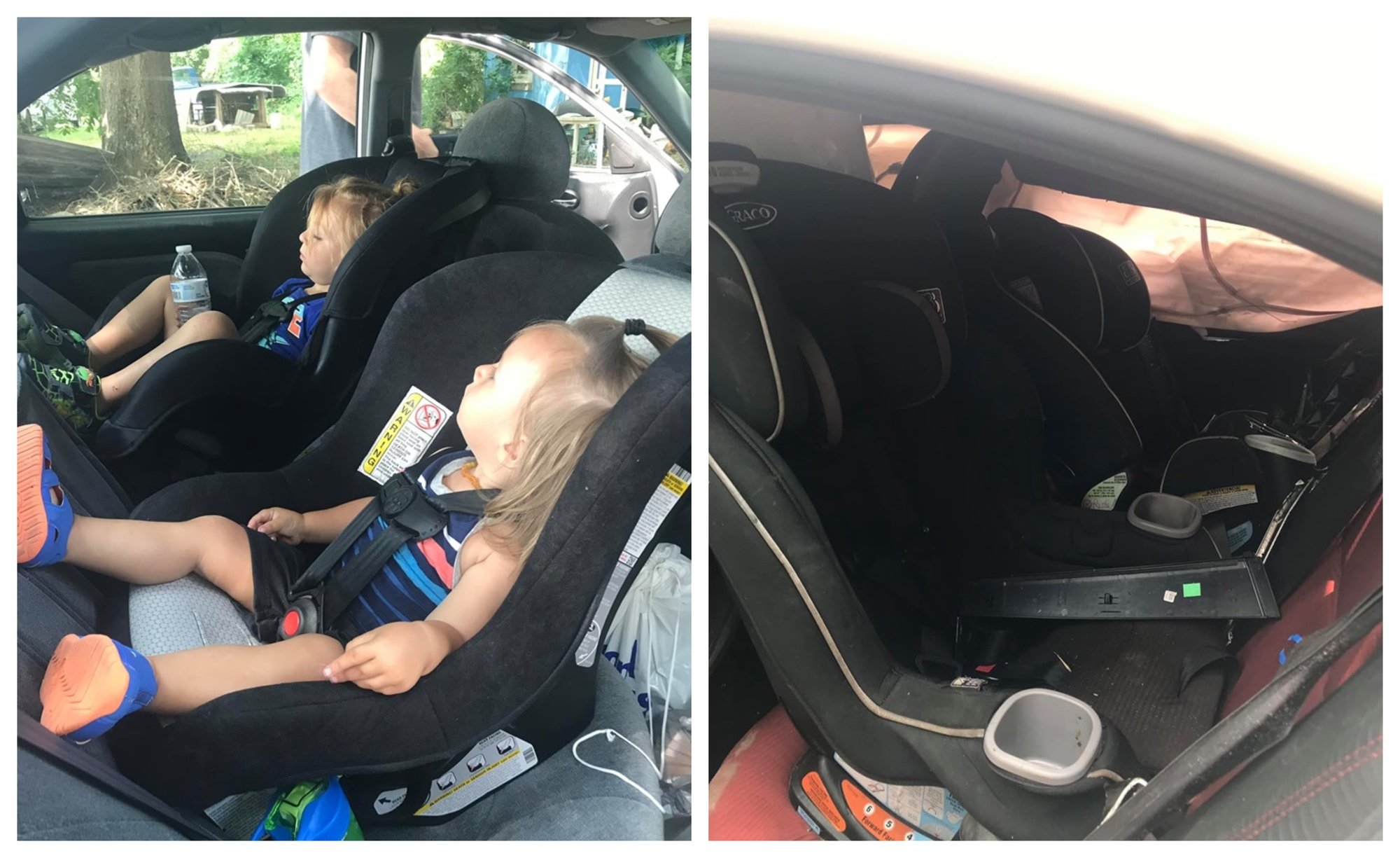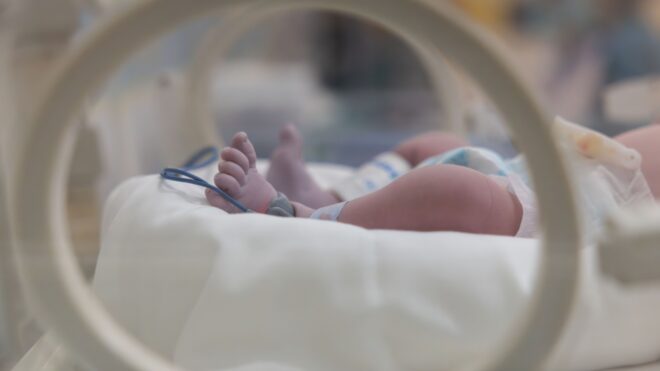
When it comes to protecting kids, car seat safety is No. 1 on the list of things to be vigilant about. Yet although we read a lot about the importance of proper installation and harness positioning, we often hear conflicting information when it comes to the debate over how long car seats should be rear-facing. Well, mom Savannah Baker took to Facebook this week to share the terrifying story of a recent accident she was in and to offer a pleading reminder of why leaving car seats rear-facing for as long as possible can save lives.
In her June 3 post, Baker opens up about the severe accident that could have turned out far more tragic than it did.
"When I saw my car today, for the first time since our accident, all I could do was shake like a leaf, and sob," Baker wrote. "I can not believe I walked away from this two days ago. I can not believe my babies walked away from this two days ago."
What they walked away from was more or less a crumpled pile of white metal. Their car had been T-boned on the left passenger side while making a left-hand turn and pushed against a light pole on the driver's side.
The car was crushed on both sides, airbags deployed all around them, and the entire thing was, understandably, traumatizing. It's the kind of accident parents pray will never happen to them — at least not while their kids are in the car.
"Jackson, my youngest, was sitting in the back passenger side and was knocked unconscious in the accident and took several minutes to wake up again," she wrote. "He suffered a mild concussion, and we all have some pretty gnarly bumps and bruises, but thanks to proper car safety, we survived."
It turns out, a fateful decision not too long before the accident made all the difference when it came to protecting Baker's kids.
The mom of two had posted a simple photo of her kids sleeping in the back seat of her car a bit before the accident when a comment rolled in.
"Someone commented and asked if Andrew, my 4-year-old, was still rear facing," she recalled. "They were asking this because when he turned 4, I had turned him around to face forward. But, because he’s 4 and was constantly kicking the back of our seats (and was still under the limits of his seat), we decided to turn him back around and wait a little longer."
And boy, is she glad she did. "And now, this is the back seat today," she wrote.
"I am so thankful we made that decision to turn him back around," she continued. "My children are ALIVE, they survived this horrific event with very minor injuries."
It isn't just Baker who credits the car seat positioning with saving her children's lives.
"The ER doctor, several nurses, the first responders, and even some random bystanders told me REPEATEDLY that the reason my children were not in critical condition, or dead, was because they were facing rear and PROPERLY buckled into the car," she shared. "I’m so happy I’ve always been such a car seat stickler. And I always will be."
Although experts once suggested turning kids around by age 1 or 2, the American Academy of Pediatrics changed its tune last year.
In August 2018, the academy updated its car seat guidelines and urged parents tho leave kids in rear-facing car seats "for as long as possible" — in other words, until they exceed the car seat's maximum height and weight requirements.
Even though that may sound a tad excessive, that's only because the guidelines have shifted considerably since we were kids (when there practically weren't any official guidelines at all). Now, following extensive crash testing and safety analysis results at our fingertips, it's becoming increasingly clear just how important proper car seat safety truly is.
According to the American Society for the Positive Care of Children, car accidents are the leading cause of death among children in the US.
Even in crashes that aren't fatal, motor vehicle accidents send 120,000 children to the hospital each year with varying degrees of injury, according to the society. Proper car seat installation and positioning, however, can help more than we think. In fact, "proper use of car seats can decrease the risk of death and injury by as much as 70% when safety seats are used correctly," the society notes, yet nearly half of all car seats actually are.
Wondering how to be sure a car seat is installed properly? Check for a nearby hospital, safety expert, or law enforcement headquarters that can review and check the car seat, plus offer any additional tips. Thoroughly review any materials provided by the car seat manufacturer before installing it.
Baker says she isn't "discounting the miracle" that happened that day, and feels someone was "definitely watching over us."
She hopes her story offers a valuable reminder to parents who might be considering turning their car seats around before it's really time.
"Check your children’s seat," she urged. "Check it twice. Do your research. Make sure they are safe EVERY time. And, while you’re at it, buckle your own seatbelt too! Most bruising I have is from the seatbelt SAVING my life. I can’t imagine the injuries I’d have sustained if I didn’t have it on."




